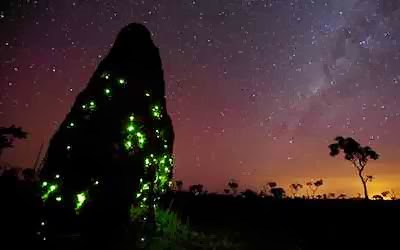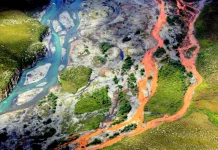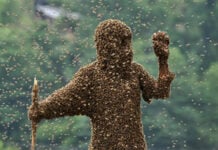The natural phenomenon of bioluminescense (the emission of light by a living organism) in known to be used by many species of algae, zooplanktons and fish around the world. This post brings you to the Emas National Park in Brazil, where luminous beetle larvae create eerie and almost alien lights within termite mounds to attract them and eat them.

The following animation by Vince Manna compiles twenty-four hours of still images including the changing cloud formations, birdlife, flying ants, the setting sun, lightning strikes, moonrise, planet Jupiter, numerous stars, the Milky way and passing meteorite’s amongst the continuous changing colours of the night sky AND, OF COURSE, THE GLOWING WORMS.
Bioluminescence is light created by living organisms often transforming landscapes into fantastic displays. It includes ‘phosphorescence’ created by marine creatures and seen on the surface of the sea at night, the light of fireflies and the faint but eerie glow of some fungi. The light is produced chemically for many different reasons: to attract attention, to frighten enemies, to disguise what you really are, or – in the depths of the sea – to provide your own ‘headlights’ to search out prey. These carnivorous glow worms use bioluminescence to attract termites, which they stockpile to eat during the wet season.












